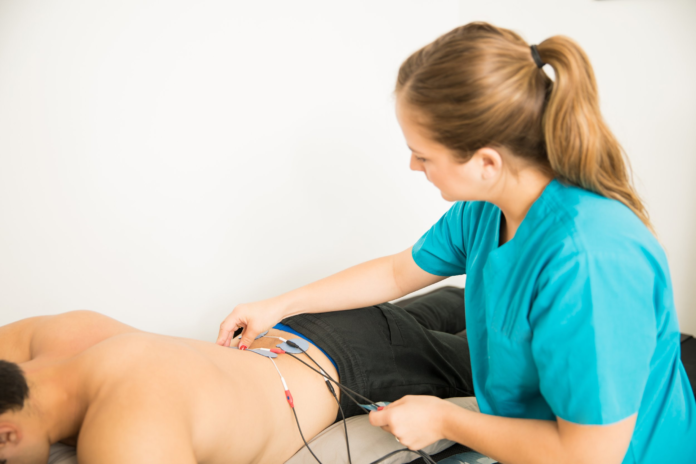Pain management doesn’t always have to rely on medications. Many people now prefer non-drug approaches due to concerns about side effects or dependency. Fortunately, several non-medication therapies offer effective, long-term relief for both acute and chronic pain. These therapies not only target the physical sensation but often improve mental well-being and quality of life as well.
Physical Therapy
Physical therapy is a cornerstone of non-drug pain management. A licensed physical therapist designs personalized exercises to:
- Strengthen muscles
- Improve flexibility and mobility
- Reduce strain on affected areas
Conditions like arthritis, back pain, and sports injuries respond well to this therapy. Regular sessions help restore function and reduce pain over time.
Chiropractic Care
Chiropractic adjustments focus on spinal alignment and joint health. They can reduce pressure on nerves and improve musculoskeletal function. Chiropractors commonly treat:
- Lower back pain
- Neck stiffness
- Sciatica
Many patients report significant pain relief after just a few sessions, though consistency is key.
Acupuncture
This ancient Chinese technique involves inserting thin needles into specific points of the body to stimulate energy flow (qi). Acupuncture may:
- Release natural pain-relieving chemicals
- Improve blood circulation
- Reduce inflammation
It’s especially effective for chronic headaches, fibromyalgia, and back or joint pain.
Massage Therapy
Massage can ease muscle tension, reduce stress, and increase circulation. It benefits conditions like:
- Tension headaches
- Soft tissue injuries
- Myofascial pain syndrome
Various types—such as Swedish, deep tissue, and trigger point massage—offer different levels of relief depending on the condition.
Cognitive Behavioral Therapy (CBT)
Pain often has a mental and emotional component. CBT helps patients:
- Reframe negative thoughts about pain
- Develop coping strategies
- Reduce anxiety and depression associated with chronic pain
It’s proven effective for migraines, lower back pain, and even irritable bowel syndrome (IBS).
Heat and Cold Therapy
Alternating between heat and ice can relieve inflammation and muscle spasms. Heat improves blood flow and loosens stiff joints, while cold reduces swelling and numbs sharp pain. This is often used for:
- Sports injuries
- Arthritis
- Acute strains and sprains
Applying warm compresses or cold packs at home is an easy, low-cost solution.
Yoga and Stretching
Yoga combines physical postures, breathing exercises, and mindfulness. It improves flexibility, strengthens muscles, and promotes relaxation. Regular practice may benefit people suffering from:
- Back pain
- Joint stiffness
- Chronic fatigue syndrome
Even simple stretches done daily can provide lasting relief from muscle tension and joint discomfort.
TENS Therapy (Transcutaneous Electrical Nerve Stimulation)
TENS devices use low-voltage electrical currents to block pain signals. They are applied using small pads placed on the skin. Common uses include:
- Post-surgical pain
- Sciatic pain
- Menstrual cramps
It’s a drug-free method that can be used at home with guidance from a doctor.
Mindfulness and Meditation
Mindfulness teaches people to focus on the present moment, reducing stress and emotional reaction to pain. Meditation:
- Calms the nervous system
- Enhances pain tolerance
- Lowers muscle tension
It’s particularly effective in managing chronic conditions like fibromyalgia and migraines.
Occupational Therapy
Occupational therapists help people adapt daily tasks to reduce strain and discomfort. They provide:
- Assistive devices
- Posture correction techniques
- Task simplification methods
This therapy is especially useful for individuals with arthritis, joint disorders, or repetitive strain injuries.
Biofeedback
Biofeedback trains individuals to control physiological functions such as heart rate, muscle tension, and breathing. Sensors monitor your body’s responses and help you learn how to relax specific muscle groups. It’s used to manage:
- Chronic headaches
- Muscle pain
- TMJ (jaw pain)
Over time, patients can reduce pain intensity and frequency.
Aromatherapy and Essential Oils
Some essential oils like lavender, peppermint, and eucalyptus have natural pain-relieving properties. Aromatherapy works by:
- Calming the nervous system
- Reducing anxiety
- Improving sleep quality
While not a standalone cure, it can enhance other therapies and improve comfort.
Art and Music Therapy
Engaging in creative activities can distract from pain and promote relaxation. Music and art therapy have been shown to:
- Lower stress hormones
- Increase mood-enhancing chemicals
- Improve focus and coping abilities
This is especially helpful in hospital or palliative care settings.
Conclusion
Non-medication therapies can be powerful tools in pain management, either alone or combined with medical treatments. From physical and cognitive therapies to alternative practices like acupuncture and mindfulness, each approach offers unique benefits. The best therapy depends on your condition, preferences, and lifestyle. Consulting a healthcare provider can help develop a personalized plan that minimizes pain and maximizes well-being.
FAQs
Are non-medication therapies effective for chronic pain?
Yes, many non-drug methods offer significant relief, especially when used consistently or alongside medical guidance.
How long do these therapies take to show results?
Some, like TENS or massage, may provide immediate relief, while others like CBT or physical therapy may take weeks of practice.
Can I use more than one non-medication therapy at once?
Absolutely. Combining therapies like yoga, mindfulness, and physical therapy can enhance results and target pain from multiple angles.
Are there side effects to non-drug therapies?
Most are low-risk, but techniques like chiropractic care or acupuncture should be performed by trained professionals to avoid complications.
Is insurance likely to cover these treatments?
Many plans now cover physical therapy, chiropractic care, and CBT. Others may require referrals or partial payments—check your provider.

